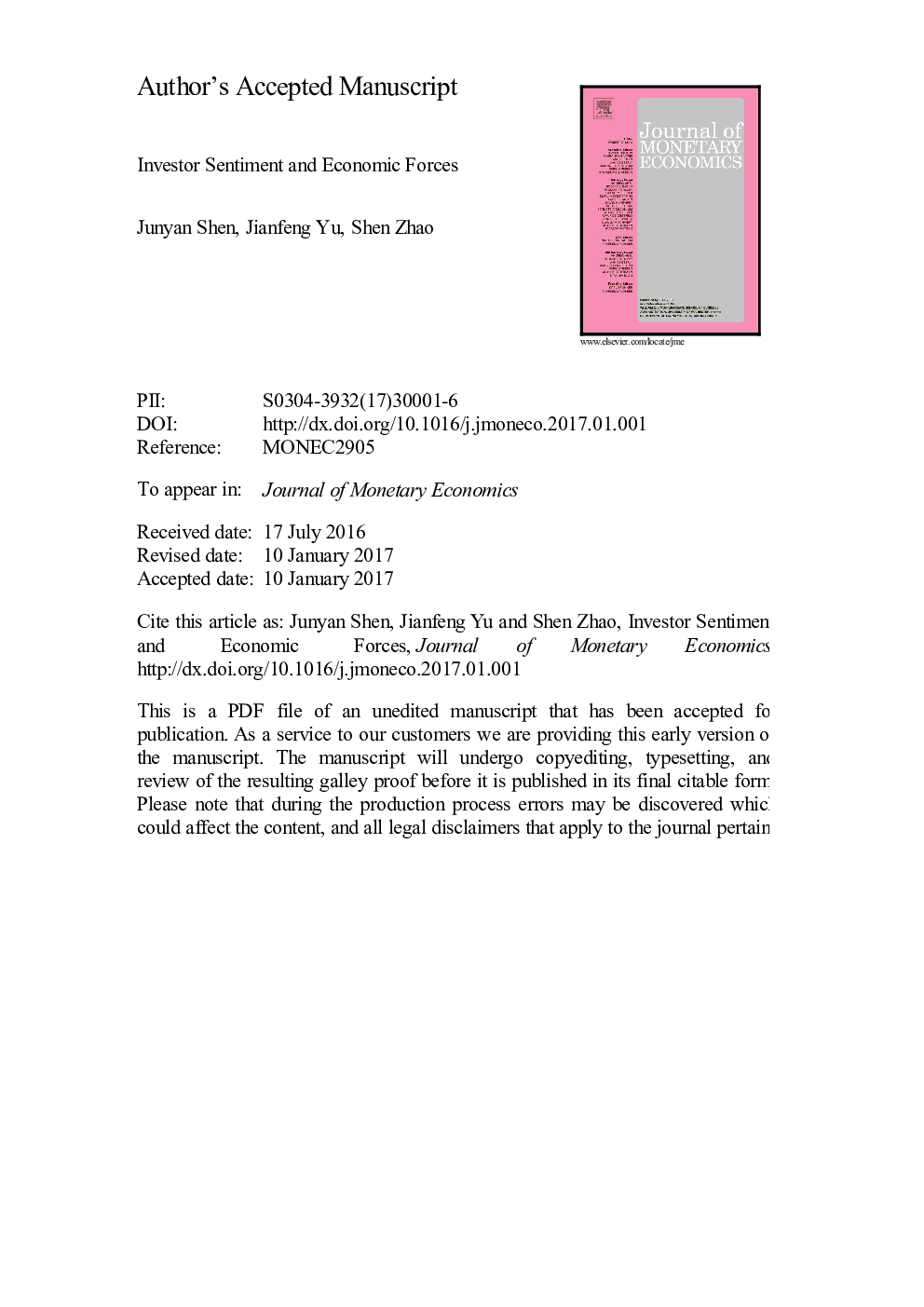| Article ID | Journal | Published Year | Pages | File Type |
|---|---|---|---|---|
| 5101531 | Journal of Monetary Economics | 2017 | 48 Pages |
Abstract
Economic theory suggests that pervasive factors should be priced in the cross-section of stock returns. However, our evidence shows that portfolios with higher risk exposure do not earn higher returns. More importantly, our evidence shows a striking two-regime pattern for all 10 macro-related factors: high-risk portfolios earn significantly higher returns than low-risk portfolios following low-sentiment periods, whereas the exact opposite occurs following high-sentiment periods. These findings are consistent with a setting in which market-wide sentiment is combined with short-sale impediments and sentiment-driven investors undermine the traditional risk-return tradeoff, especially during high-sentiment periods.
Related Topics
Social Sciences and Humanities
Economics, Econometrics and Finance
Economics and Econometrics
Authors
Junyan Shen, Jianfeng Yu, Shen Zhao,
